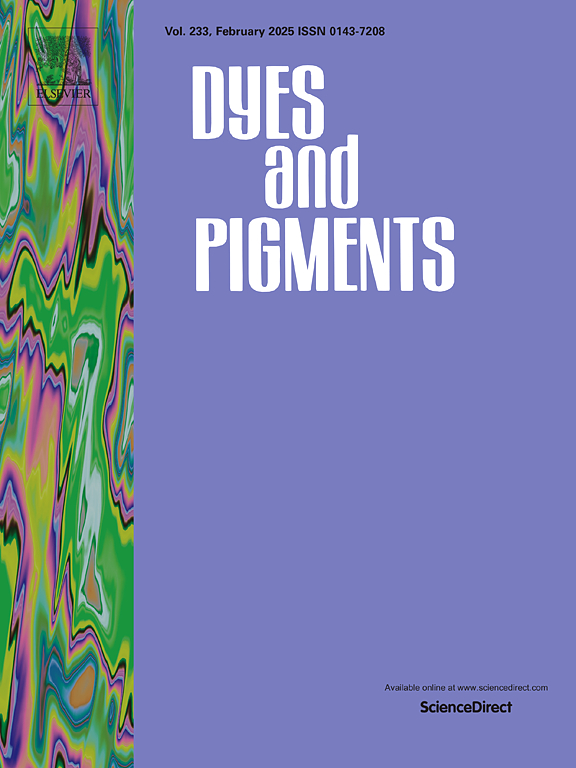CdS/CQDs三维复合材料的构建及可见光催化降解天然木质素的性能与机理研究
IF 4.1
3区 工程技术
Q2 CHEMISTRY, APPLIED
引用次数: 0
摘要
木质素是地球上一种独特的可再生碳源,在绿色能源和环境保护领域受到广泛关注。由于其优异的电子输运性能、合适的带隙宽度以及对污染物的超高降解效率,硫化物在清洁能源开发和光催化降解领域受到了学者们的青睐。然而,由于光腐蚀和光生成载流子空穴复合的速度快,硫化镉(cd)由于光腐蚀速度快,目前不适合工业规模生产。因此,本文构建了一种新型的CdS/CQDs三维复合材料,并进一步研究了天然木质素的光催化性能和机理。首先,通过控制CdS的形貌来确定晶体生长的最佳取向。然后将从木质素中提取的碳量子点(CQDS)原位负载在CdS微球上。结果表明,负载CQDs的CdS对AL具有优异的降解性能,60 min内AL几乎完全降解,降解效率是商用催化剂的20倍(P25 k = 0.037/min−1,反应级为一级)。催化剂在长时间储存后也能保持这种高活性。一系列表征结果表明,CQDs的加入可以产生硫空位,并诱导其相变重排。改变导带和价带的位置,抑制空穴和载流子的复合效率。光催化降解率大大提高。本文章由计算机程序翻译,如有差异,请以英文原文为准。
Construction of CdS/CQDs three-dimensional composites and study on the properties and mechanism of visible light catalytic degradation of natural lignin
Lignin is a unique renewable carbon source on Earth, which has attracted much attention in the fields of green energy and environmental protection. Because of its excellent electron transport performance, suitable bandgap width, and ultra-high efficiency of degrading pollutants, sulfides have been favored by scholars in the field of clean energy development and photocatalytic degradation. However, due to the fast speed of photo corrosion and photo generated carrier hole recombination, Cadmium sulfide (CdS) is currently unsuitable for industrial-scale production due to rapid photocorrosion. Therefore, in this work, a novel CdS/CQDs three-dimensional composites was constructed and photocatalytic properties and mechanism of natural ligin was futher investigated. Firstly, the optimum orientation of crystal growth is determined by controlling the morphology of CdS. Then carbon quantum dots (CQDS) extracted from lignin were loaded on the CdS microspheres in situ. The results showed that CdS loaded with CQDs showed excellent performance in degrading AL, with AL almost completely degraded within 60 min. The degradation efficiency is 20 times that of commercial catalyst (P25 k = 0.037/min−1 the reaction order is the first order). The catalyst also retains this high activity after long storage. A series of characterization results show that the addition of CQDs can generate sulfur vacancy and induce phase transformation rearrangement of the. The position of conduction band and valence band is changed to inhibit the recombination efficiency of hole and carrier. The photocatalytic degradation rate was greatly improved.
求助全文
通过发布文献求助,成功后即可免费获取论文全文。
去求助
来源期刊

Dyes and Pigments
工程技术-材料科学:纺织
CiteScore
8.20
自引率
13.30%
发文量
933
审稿时长
33 days
期刊介绍:
Dyes and Pigments covers the scientific and technical aspects of the chemistry and physics of dyes, pigments and their intermediates. Emphasis is placed on the properties of the colouring matters themselves rather than on their applications or the system in which they may be applied.
Thus the journal accepts research and review papers on the synthesis of dyes, pigments and intermediates, their physical or chemical properties, e.g. spectroscopic, surface, solution or solid state characteristics, the physical aspects of their preparation, e.g. precipitation, nucleation and growth, crystal formation, liquid crystalline characteristics, their photochemical, ecological or biological properties and the relationship between colour and chemical constitution. However, papers are considered which deal with the more fundamental aspects of colourant application and of the interactions of colourants with substrates or media.
The journal will interest a wide variety of workers in a range of disciplines whose work involves dyes, pigments and their intermediates, and provides a platform for investigators with common interests but diverse fields of activity such as cosmetics, reprographics, dye and pigment synthesis, medical research, polymers, etc.
 求助内容:
求助内容: 应助结果提醒方式:
应助结果提醒方式:


